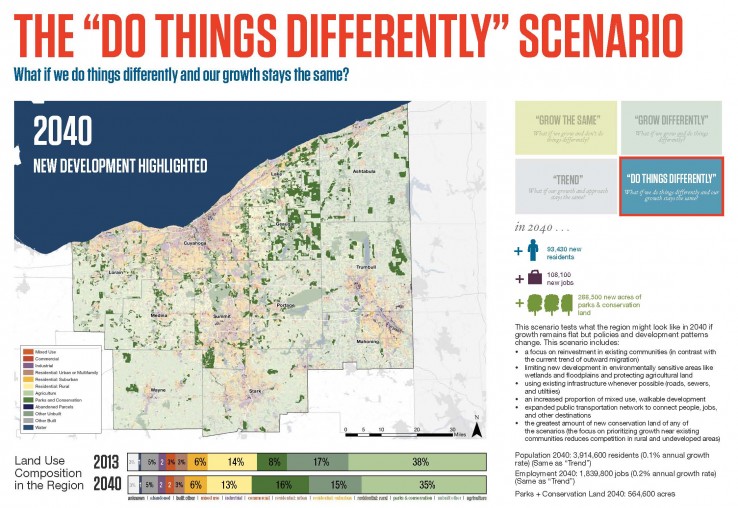On February 25, the NEOSCC Board voted unanimously to approve and endorse the Vibrant NEO 2040 Vision, Framework and Action Products. We are sharing an “Initiative A Day” so you can gain a better understanding of the vision and framework! If you would like to read all of the Initiatives, you can download them here: Recommendation and Initiatives. You can access a pdf of the entire vision chapter here. The vision chapter contains all 41 initiatives, development strategies, indicators, and matrices that identify how the recommendations, initiatives and indicators all relate.
Show your support for Vibrant NEO 2040 by adding your name to our Champions of Vibrant NEO 2040 list here.
Initiative 9.3: Identify one or more organizations that will host and maintain the technical resources created by NEOSCC so that they will remain current, accurate, and available for future regional visioning and planning.
WHAT THIS MEANS. The Vibrant NEO 2040 regional visioning process involved extensive data collection and integration, surveys of best practices, and compilations of tools and pilot projects. Taken together with the alternative development scenarios and the vision indicators, the output of NEOSCC constitutes a body of valuable resources for the region as it plans its future. Data-driven resources require maintenance, however, and maintenance requires an organizational framework and adequate financial support. Most regions that have undergone visioning processes similar to Vibrant NEO 2040 have invested their MPOs with responsibility for carrying the vision and its products forward; several created non-profit organizational entities whose dedicated purpose was to work with stakeholders to advance the vision’s goals, including providing technical assistance and planning services. The Salt Lake City metro area’s Envision Utah is the stand-out example of the latter group.
WHY THIS IS IMPORTANT. NEOSCC was able to generate appreciable momentum in Northeast Ohio in regional thinking through the Vibrant NEO 2040 process. As the region proceeds with planning and implementing the vision, it will be important for data to be maintained and refreshed so progress toward vision goals can be measured. This need not involve high levels of methodological sophistication; the “Technical Appendix” in fact contains detailed notes on data sources and instructions on how to calculate indicator statistics. What will be necessary is the computing infrastructure and data storage capacity to perform these updates.
GETTING IT DONE. In Northeast Ohio, MPOs, COGs, and universities are the current organizations best positioned to do take over NEOSCC work products. The resources could be distributed to one (especially in the case of a university partner), or several (in the case of MPOs and COGs) of these organizations for ongoing maintenance and use, with recommendations from NEOSCC on updating methodology and on data standardization. Ideally, however, NEOSCC would be retained and formalized as an inter-governmental, cross sector partnership that maintains and updates the resources created for the visioning process, and works with regional planning entities and other partners to continue standardizing regional data.
Regardless of the “ownership” structure of the data and post-visioning work, the region should consider extending the NEOSCC indicators and trends web platform into a more dynamic virtual space for sharing and interacting with data. The Boston Indicators Project, launched in 2011, is a good example of this; it has served to galvanize action across jurisdictions and sectors to work toward implementing Boston’s regional vision, which was completed in 2008. NEO CANDO at Case Western Reserve University could be a logical partner for developing an online mapping interface for geographic data.
| Lead | Metropolitan Planning Organizations, Councils of Governments; Nonprofit Organizations; Municipalities, Townships, Counties |
| Target Community | Strategic investment areas, asset risk areas, cost risk areas |
| Implementation Complexity | Moderate |
These recommendations, initiatives, and products, are not one-size-fits all and some aspects of the initiatives won’t be applicable everywhere in the 12-county region. The Vibrant NEO 2040 Vision, Framework and Products are intended inspire and guide decision-making at the Metropolitan Planning Organization (MPO), Council of Government, and local levels to ensure that land use, transportation, and environmental considerations are simultaneously addressed by their processes. Ultimately, the implementation of Vibrant NEO 2040 is up to Northeast Ohio’s communities and residents. But regardless of the applicability of each initiative to any particular part of the region, the goal for each community within the Vision is the same: stability, prosperity, and a high quality of life for all of its residents.

